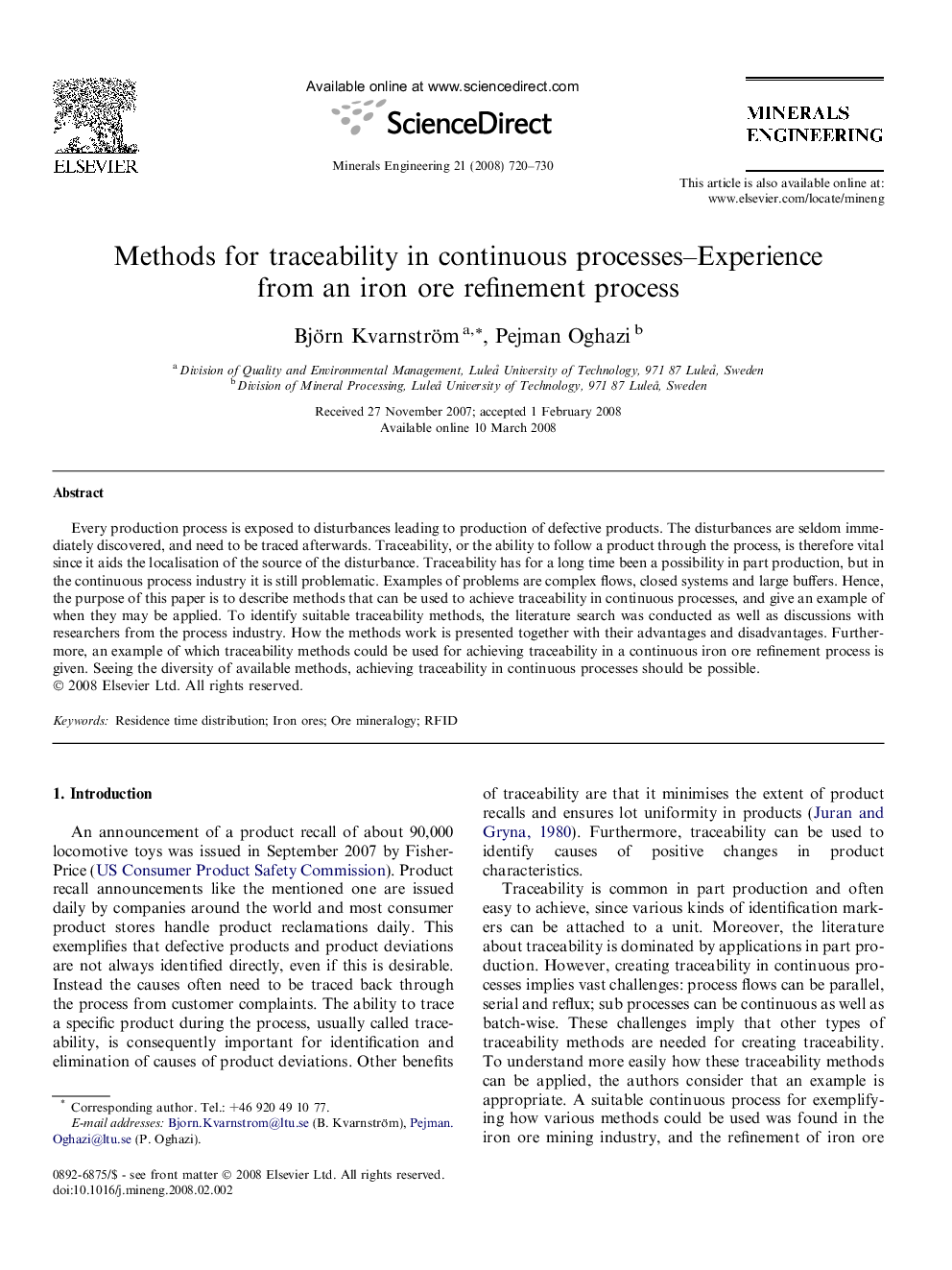| Article ID | Journal | Published Year | Pages | File Type |
|---|---|---|---|---|
| 234263 | Minerals Engineering | 2008 | 11 Pages |
Every production process is exposed to disturbances leading to production of defective products. The disturbances are seldom immediately discovered, and need to be traced afterwards. Traceability, or the ability to follow a product through the process, is therefore vital since it aids the localisation of the source of the disturbance. Traceability has for a long time been a possibility in part production, but in the continuous process industry it is still problematic. Examples of problems are complex flows, closed systems and large buffers. Hence, the purpose of this paper is to describe methods that can be used to achieve traceability in continuous processes, and give an example of when they may be applied. To identify suitable traceability methods, the literature search was conducted as well as discussions with researchers from the process industry. How the methods work is presented together with their advantages and disadvantages. Furthermore, an example of which traceability methods could be used for achieving traceability in a continuous iron ore refinement process is given. Seeing the diversity of available methods, achieving traceability in continuous processes should be possible.
